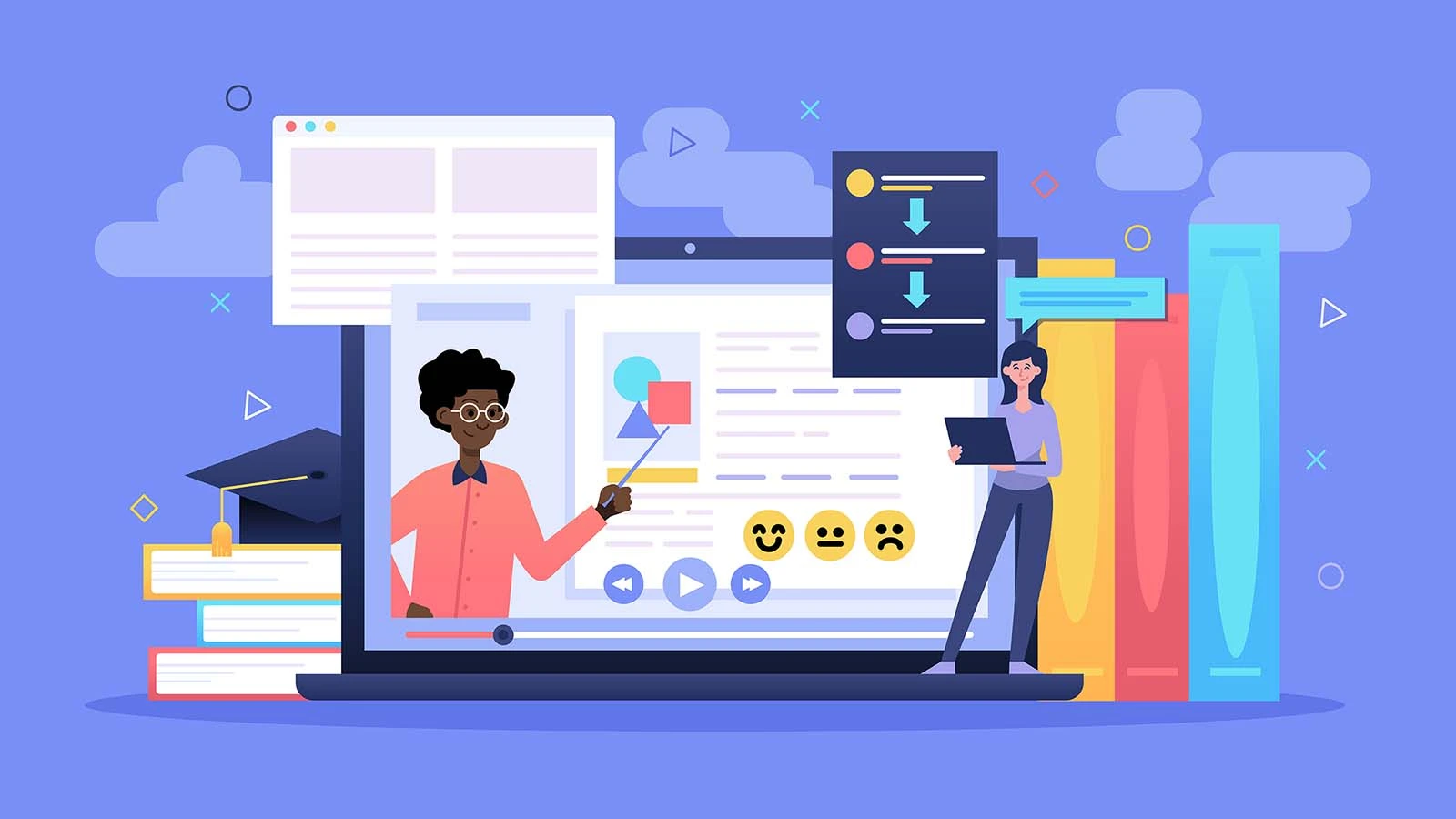Building an Effective Training Plan for the Manufacturing Industry
Rohit Kumar
15 Jul, 2023

In the fast-paced world of manufacturing, time is of the essence. Companies can't afford to invest in training programs that don't yield the desired outcomes. This article will walk you through designing a high-quality employee training program that strengthens your industrial workforce and keeps you competitive in the era of technology and automation.
What is Manufacturing Training?
Manufacturing training programs are designed to equip employees with the knowledge and skills to perform their jobs safely and efficiently and adapt to the rapidly evolving industry.
Training is crucial given the labor shortages and high-risk environments that are common in the manufacturing sector. Effective training programs can enhance employee engagement, foster a more productive and performance-oriented workforce, and, most importantly, save lives.
A basic manufacturing training program typically covers:
- Safety procedures: Identifying, preventing, and reporting risks and hazards in the workplace.
- Lean manufacturing: Minimizing waste, implementing the 5S methodology, and optimizing efficiency.
- Quality control: Procedures, inspection techniques, testing methods, and defect analysis.
- Industry-specific technical skills: Tools like Six Sigma, etc.
How to Develop a Manufacturing Training Program
While some aspects of manufacturing training are best learned on the job, compliance, quality control, and health and safety training can be delivered online. Here's how to create a digital manufacturing training program that employees want to participate in.
Step 1: Assess Training Needs
Start by conducting a training needs analysis. This comprehensive assessment helps identify the training employees need to enhance their performance. It pinpoints the gap between employees' current skills and the skills they should have. For instance, you'll need to design a training module if employees lack knowledge about a specific manufacturing machine.
Step 2: Define Clear Learning Goals and Objectives
Once you've identified the areas that require training, set learning goals and objectives for the training program. Here's a breakdown of what you need to know:
- Number of Goals: Start with one goal per training and then define the learning objectives to help you reach them. Generally, aim for around three or four learning objectives per goal. You may need more or less depending on the quantity and complexity of the training topic.
- Structure of Goals: Following the SMART framework, your learning objectives should be Specific, Measurable, Achievable, Relevant, and Time-bound.
- Communication of Goals: Ensure employees understand the goals and expectations by including them in the description of your online training program and at the beginning of each course.
For example, suppose you're delivering a training module on quality control. In that case, a learning objective following the SMART goal-setting technique might be: "By the end of Q3, we'll see a 20% reduction in the assembly line defect rate by providing all quality control staff with targeted training."
Step 3: Create a Training Plan
After defining your objectives, create a training plan. That requires careful planning, especially in a high-stakes area like manufacturing. You'll also need to enlist the help of in-company subject matter experts (SMEs) to ensure your program is as comprehensive as possible.
Your training plan should outline all the major elements of the program, including:
- Training delivery methods: Will you deliver your training program online, in person, or through blended learning?
- Learning content types: Will the training include role-plays, multimedia content, lectures, coaching, on-the-job learning, webinars, etc.?
- Evaluation method: How will you track progress and measure the overall success of your program?
Step 4: Develop Training Content
The next step is to create your eLearning materials. These include interactive modules, videos, simulations, quizzes, and more. An authoring tool like Core Competency Suite can help you build professional-looking training materials quickly and easily. It allows you to create interactive eLearning resources from scratch, repurpose your existing content, and upload it to your LMS as SCORM files.
Here are some examples of content you can create using Core Competency LMS:
- Interactions: Diagrams, timelines, glossaries, catalogs, FAQs, clickable images, and more. Interactions are excellent for creating microlearning content that motivates learners to interact with the material, resulting in more engaged learners and higher knowledge retention rates.
- Quizzes: Interactive assessments to engage learners and test their knowledge. Quizzes motivate learners and give L&D teams valuable data on employees' levels of knowledge.
- Video Lectures: A presenter's video capture may include images, infographics, captions, and animations to bring content to life. Videos are an engaging way to simplify complex concepts and appeal to different learning types.
- Slide-based Online Courses: A series of interactive slides with text, images, audio, video, interactions, and quizzes. This simple and intuitive format is perfect for sharing core messages and engaging learners' knowledge.
Step 5: Gather Feedback
Before you formally launch your manufacturing training program, it's important to test it. Proper testing will ensure you spot any potential issues before the training is in the wild. Here's how to set up a pilot program:
- Identify a pilot group. This group should contain employees of different experience levels and backgrounds; it will give you the most accurate picture of how it performs.
- Hold a quick Q&A session explaining the goals, expectations, and tasks with the pilot group.
- Have the testers review the training program several times and note their comments.
- Ask testers to complete a feedback questionnaire.
- Hold a follow-up session to analyze their feedback and clarify doubts.
Remember, you won't be able to apply all the feedback (or at least not immediately), so be realistic and prioritize the key changes. You can add the rest to a list of future improvements.
Step 6: Deliver the Training
Once you've thoroughly tested and tweaked your training program, it's time to launch it. A learning management system (LMS) is ideal for delivering digital and blended training because it's flexible, scalable, and trackable.
For example, with Core Competency Learn LMS, you must upload your training content and organize it into personalized learning paths. Then, you can set up who receives the training by creating groups and departments. Learners will get an enrollment notification and can follow the link to take the training.
Step 7: Measure Training Results
Understanding the impact of the training program is essential. And while tracking performance is a major part of this, there are other important metrics to consider as well. When using an LMS like Core Competency Learn, you can extract valuable data to track many learner behaviors. That will offer deep insights into how engaging your training is, its effectiveness, areas needing improvement, and other important success metrics.
Automating Manufacturing Training with an LMS
Automating training with an LMS is an easy way to save time and focus on more meaningful work. Here are some ways you can automate manufacturing training with Core Competency Learn LMS and reduce L&D workloads:
- Training Management Tasks: After the initial setup, Core Competency runs independently, making automating repetitive tasks easy. For example, the platform does the hard work for you rather than manually enrolling learners, scheduling courses, and setting course deadlines.
- Streamlined Communication: You can streamline communication with learners by setting up automated reminders and notifications. The messaging feature allows learners to communicate directly with instructors from the platform.
- Learning Tracks: With Core Competency Learn, you can build structured learning tracks for different teams and on various training topics. All you have to do is combine the relevant training modules into a single path. You can also set up course prerequisites if modules should be taken in order.
- Certification and Retraining: All industry employers must provide regular compliance training for manufacturing employees. With Core Competency, you can automate it by setting up retraining. That means employees will automatically enroll in the course when it's time to retake it. Moreover, admins can set up automated certification. The learning platform will award employees a downloadable certificate of completion when completing the program (and passing the final assessment). No manual process is required.
- LMS Reporting: Core Competency's automated LMS reporting allows managers to track learner progress in real-time without manual record-keeping. They can schedule weekly reports to arrive in their inbox and follow the metrics that matter.
Frequently Asked Questions
Here, we answer the most common questions about training for manufacturing companies.
What are the benefits of delivering manufacturing skills training online?
There are many advantages of running training online, including:
- Flexibility: Staff can learn at any time or location, ensuring that shift workers and employees in different time zones can access training.
- Cost-effectiveness: Digital training reduces training costs related to travel, facilities, and instructor fees.
- Consistency: Online manufacturing training standardizes processes and procedures, ensuring employees receive the same information.
- Engagement: eLearning allows you to incorporate interactive elements, such as videos, simulations, and quizzes, boosting learner engagement and knowledge retention.
- Accuracy: Digital training is easier to update to reflect changes in the manufacturing process, technology, and industry regulations.
How can organizations keep staff engaged during online manufacturing process training?
Keeping a manufacturing workforce engaged during training is a common challenge, but it's easy with the right strategies and tools. Here are some best practices to guide you:
- Incorporate diverse content (videos, interactive exercises, quizzes, etc.) to cater to different learner types
- Set clear objectives and expectations and show employees how they align with larger organizational goals
- Offer regular feedback and support throughout the training process
- Leverage gamification elements like badges, points, and leaderboards to motivate your learners
Conclusion
Effective manufacturing training can significantly benefit your business by increasing productivity and ensuring safer working conditions. One of the best ways to automate the training process, reduce costs, and improve the quality of your training is to move it online. All you need is a powerful LMS like Core Competency and a full-featured authoring tool.
If you're ready to see the benefits of training automation, sign up for a demo of the Core Competency LMS and get a free trial today. There's never been a better time to optimize your manufacturing skills training and build a high-performing workforce.
Assessment of Behavioural Core Competencies
For example, students struggling with a particular concept could be provided with additional resources or assigned to a different module via the e-learning and learning management system.
Read Blog




